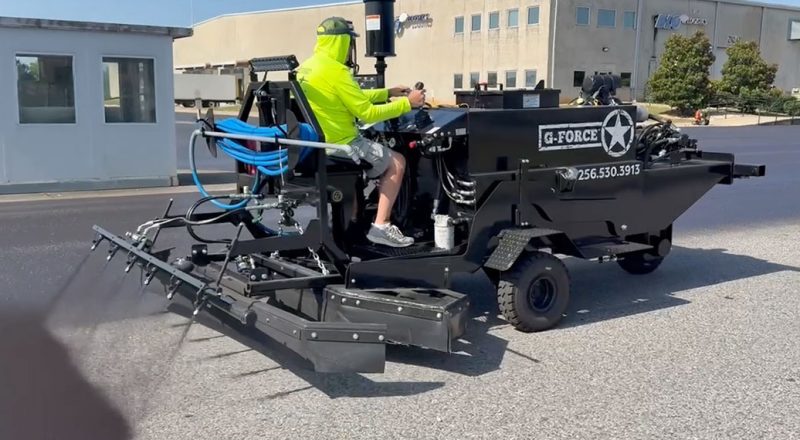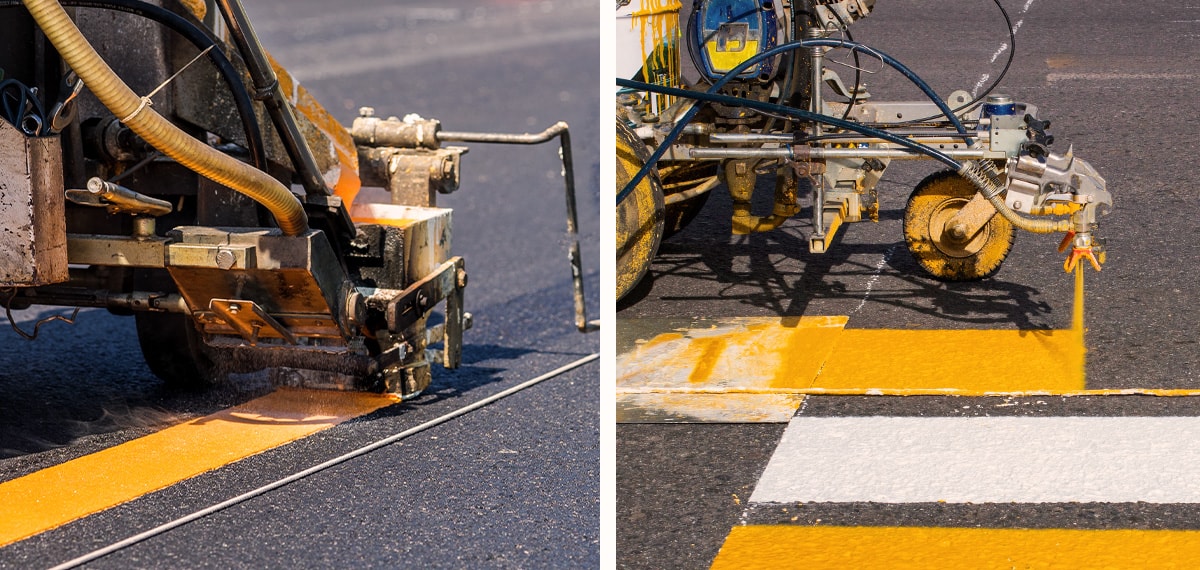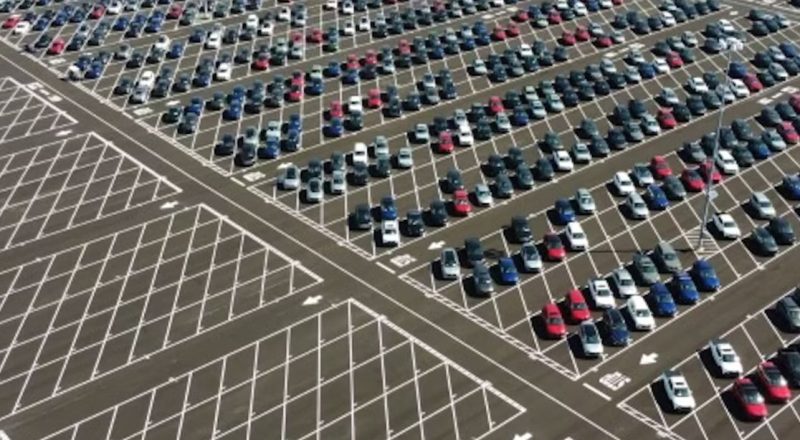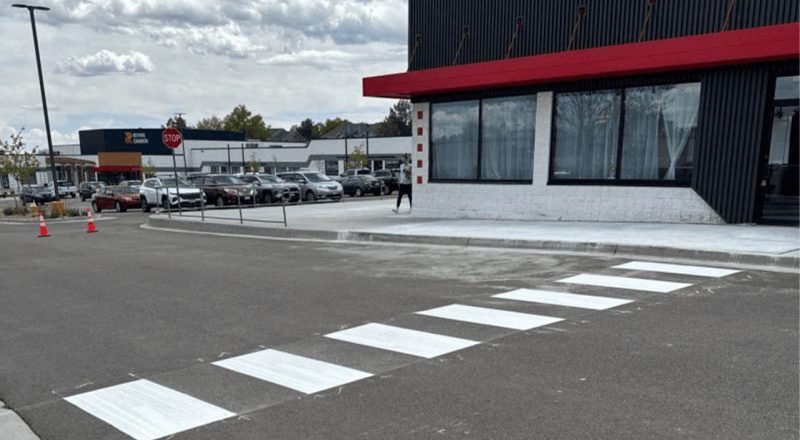
Sealcoating vs. Resurfacing: What’s the Difference and When to Choose Each
Not sure whether your asphalt parking lot needs sealcoating versus resurfacing? Discover the key signs, benefits, and costs of sealcoating vs. asphalt resurfacing.
Every successful business owner and facility manager understands the importance of making a great first impression. One often-overlooked detail that literally and figuratively guides people in and out of your facility is pavement markings. Crosswalks, directional arrows, stop lines, fire lanes, ADA stalls, designated parking spots, and EV charging stations all contribute to the safety and organization of your property. When properly installed, these markings are more than just lines on the pavement; they’re essential safety and navigation tools.
Two of the most common materials used for parking lot projects are thermoplastic markings and traditional traffic paint. Need help determining which is the right option for your project? You’ve come to the right place!
Thermoplastic pavement markings are not paint, but a durable plastic material made from pigments, synthetic resins, and glass beads. The material is heated to its melting point in specialized equipment and then applied in liquid form to the prepared surface. Once applied, it cools and hardens quickly, bonding to the pavement and creating a tough, long-lasting surface marking.
These pavement markings may also come in what’s known as preformed thermoplastic, meaning the material is ready made and pre-cut to a specific shape or symbol. Preformed thermoplastics are simply placed on the asphalt surface and heated with a propane torch.
Because thermoplastic markings set rapidly, trained professionals must apply them precisely using specialized equipment to ensure clean lines and proper adhesion.
The most common use cases for thermoplastic markings include:
All of these instances require maximum durability and reflectivity to ensure safety.

Traditional traffic paint, often made from waterborne acrylic formulations, remains a popular choice for parking lots, roadways, and other paved surfaces. It’s designed for ease of application and quick drying, and most products meet federal performance standards, including TT-P-1952E compliance for airfield and roadway markings.
G-FORCE® Parking Lot Striping trusts Sherwin-Williams products coupled with Graco’s top-of-the-line line striping machines for pavement marking applications.
The most common use cases for traffic paint application include:
These markings tend to be high-volume and require flexibility for new layouts. Therefore, the cost, speed of application, and flexibility of traffic paints trumps thermoplastics.
Deciding between thermoplastic markings and traditional traffic paint depends on your property’s traffic volume, budget, and maintenance schedule. High-traffic areas that demand longevity and reflectivity often benefit from thermoplastic, while properties needing flexibility or frequent updates may prefer traditional paint. In many cases, a mix of both may be recommended for a property. For example, we often stripe a lot with traffic paint, but install thermoplastic crosswalk markings that require extra reflectivity at night.
No matter which material you choose, working with the right professionals makes all the difference. The experts at G-FORCE® Parking Lot Striping will assess your property, discuss your goals, and recommend the most effective pavement marking solution.
Find a location near you today to discuss the right pavement markings for your property. With a network of 49 Veteran-owned and operated locations nationwide, we promise to show up on time, in uniform and be accountable for all our business practices.

Not sure whether your asphalt parking lot needs sealcoating versus resurfacing? Discover the key signs, benefits, and costs of sealcoating vs. asphalt resurfacing.

Rob Young’s journey from machinist to award-winning franchisee with G-FORCE® Parking Lot Striping showcases his unwavering determination and entrepreneurial spirit.

Damian Schlereth’s journey from U.S. Marine Corps corrections officer to G-FORCE® Parking Lot Striping franchisee in Denver reflects a commitment to service and community.